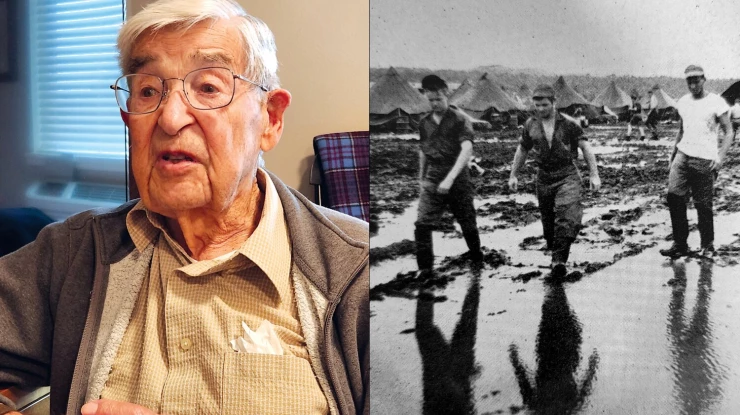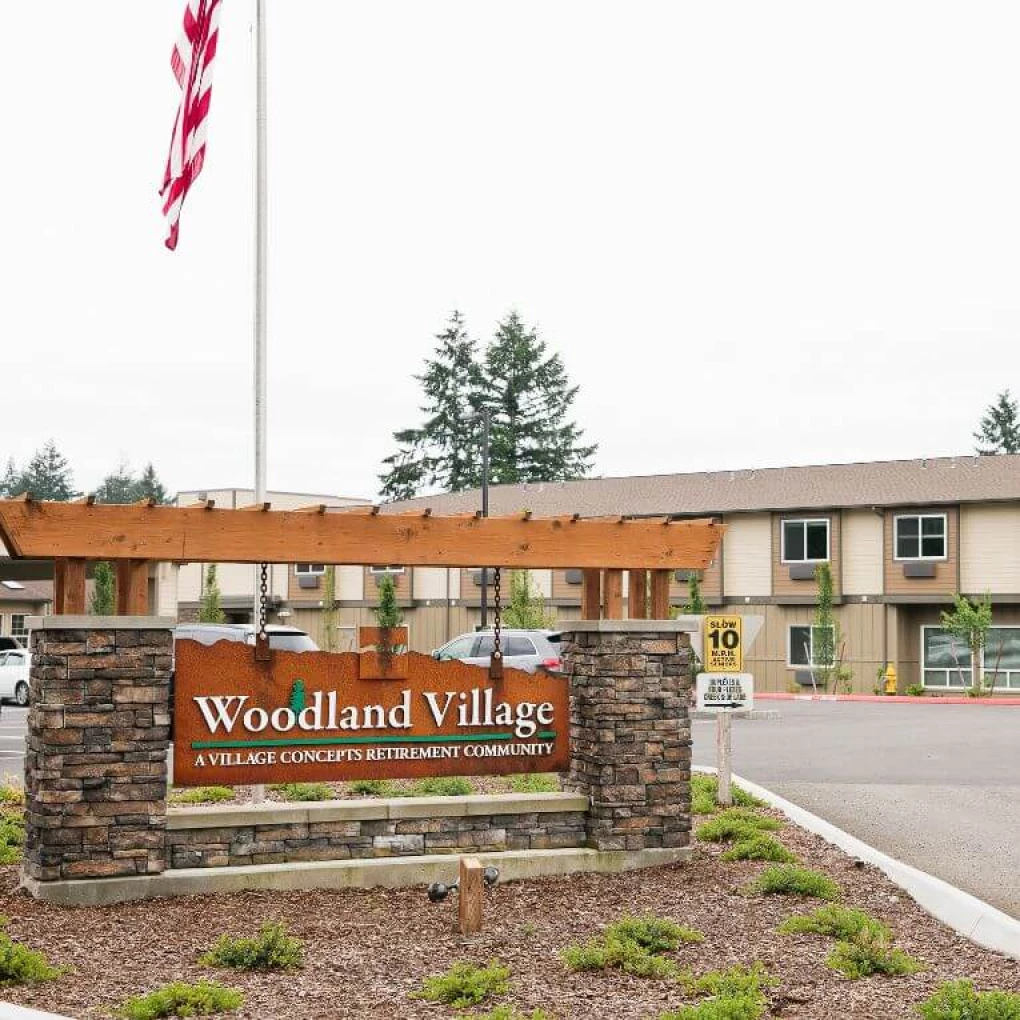When Japanese bombers attacked U.S. Navy ships at Pearl Harbor on Dec. 7, 1941, Clarence Piper was a high school sophomore visiting his uncle in the hills of Oregon and read about the attack in the newspaper.
That sneak attack on the naval base at Hawaii, which killed 2,403 people and destroyed eight battleships and 11 other vessels, changed the lives of Piper and millions of other young men in the United States who served in the military to defeat the Axis powers of Germany, Japan and Italy.
“Everyone was involved in World War II,” said Piper, 98, who moved to Woodland Village in Chehalis a few years ago after living two decades in Tenino. “The country was just completely unified, and we all expected to serve one way or another.”
He didn’t enlist because he had no idea what he could do. But Uncle Sam sent a draft notice ordering him to join the military after graduating from Sumner High School in June 1943. When he reported, the Navy needed workers for its naval construction battalions, known as Seabees.
My thoughts flew immediately to John Wayne’s portrayal of civilian contractor “Wedge” Donovan in the 1944 film, The Fighting Seabees, but when I mentioned it, Piper chuckled, describing it as “a total exaggeration.”
“We weren’t much in combat,” he said of his time on Tinian, a small island about 50 miles north of Guam and 5 miles southwest of Saipan where he arrived in the fall of 1944. “I mean, there were a few spots.”
He opened his copy of The 135th Review USNCB, where three men killed on the Marianas island of Tinian were memorialized on the first page of the book commemorating the work of the 135th Construction Battalion.
One night, Piper’s friend, Kenneth Ross, an excellent marksman, stood guard on the perimeter when Japanese tried to sneak into camp. Ross shot and wounded a man, who then pulled out a grenade, held it to his chest, and blew himself up rather than risk being taken prisoner. Piper said his friend had been plagued by guilt and remorse after shooting the soldier and watching him die. Then, on Nov. 7, 1944, Ross, a religiously devout man, died in an accident while cleaning his gun.
“The Marines had done a good job of clearing the island, but there were still holdouts,” Piper said. “You are kind of told to stay on base.”
But on March 18, 1945, three men ventured outside looking for souvenirs and ran into a Japanese unit hiding in a cave. The enemy killed two men — Homer Cameron and Charles Schroeder — while the third escaped to report the losses.
As a laborer in D Platoon, Piper worked with experienced equipment operators on construction crews on Tinian. He erected Quonset huts and served as what was called a “wagon driller.” They used pneumatic air drillers to dig 4-foot-deep holes that they stuffed with dynamite to blast the coral and make way for the runway. They stripped dirt from the coral to build the runway for B-29 pilots. At 18, he didn’t know anything and simply followed orders, he said.
“You could plan on doing kitchen duty about once a month for a week,” he said.
He worked six days a week with Sundays off. They ate a lot of spam, fricassee chicken they called SOS, and powdered eggs, and received an allotment of two beers a month.
Piper, who was born in February 1925, grew up in the Puyallup Valley, the youngest of Francis “Frank” and Stella (Sausser) Piper’s seven children. His father worked as a logger, and his mother tended the children, a big garden and a few cows, chickens and pigs. The family also raised raspberries on their five acres. His mother canned a lot of meat, fruit, and vegetables.
“It’s quite a nice place to grow up,” he said. “It was right in the heart of the Depression, and we were as poor as it can get.”
He was seven when the family first bought a car, a 1925 Willys Knight.
After spending his first eight grades in a two-room school in McMillin in Pierce County, with eight students in his class, he studied at Sumner High School. He played basketball and enjoyed Christmas plays and singing programs.
In high school, Piper saved money to buy his first car, a 1929 Model A, but couldn’t travel far on his ration of four gallons of gas a month.
“We could drive it to school about three times,” he said.
A farmer friend a year younger than him had more gas ration stamps, so they could drive farther together, even once traveling to Eastern Washington. “He had to supply gasoline for the rest of us,” Piper said.
After he was drafted, Piper was sent to Camp Perry near historic Williamsburg, Virginia, for boot camp, where they did a lot of calisthenics, obstacle courses and marching to improve their physical condition. Assigned to a unit, he spent time in amphibious training at Newport naval base near Providence, Rhode Island, and then in Gulfport, Mississippi, where they did construction work for the Army. He traveled home by train for Christmas leave before sailing on May 18, 1944, aboard a converted French passenger liner. They stopped in Hawaii, where the construction battalion spent two months at Pearl Harbor building barracks. As a Seabee who drove nails and sawed boards, he didn’t expect to see much combat.
When they sailed the Pacific Ocean, Piper said, their converted passenger liner with its huge diesel engine traveled at more than twice the speed of the convoy’s Liberty ships, so periodically it pulled to the side and maintained a zigzag pattern to avoid Japanese submarines while revving the motor until the rest of the ships caught up.
On Oct. 24, 1944, the 135th Naval Construction Battalion arrived at Tinian, where average annual rainfall was 75 inches, twice the annual precipitation of the Puyallup Valley.
“It was a muddy mess really,” Piper said.
Tinian, an island at most 10 miles long and less than 40 square miles altogether, was formed by a coral reef exposed as the ocean receded rather than by volcanic eruptions like many islands.
“It was flat,” Piper said, “so it was ideal for building a large airbase. The north end was very flat and didn’t have as much vegetation on it. That’s where the airfield was started.”
From Tinian, B-29 pilots to launch bombing raids on Tokyo, Japan, about 1,500 miles away, which took 12 hours round-trip. Piper recalled before he joined the military when, on Feb. 18, 1943, the prototype B-29 bomber crashed into the Frye Meat Packing Plant south of Seattle, exploded, and killed eight men on the plane and 20 workers in the building. That happened on his 18th birthday and kind of set back the program, he said, but by the time he served on Tinian, B-29s there flew round-the-clock bombing raids to Japan.







